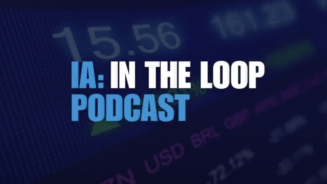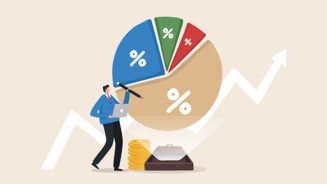M&G Investments head of retail fixed interest Jim Leaviss said his team had brought back some US treasury bond duration since the correction in March that has led US 10-year government bond yields to reach around 3%.
“Suddenly you can achieve those levels of yield so there is potentially some value right now compared to the start of the year,” he said.
Emerging markets
Leaviss says the significant emerging market debt sell-offs were another area of interest – in particular Mexico, Russia, and Turkey.
“Emerging markets were very hot in 2017 and local currency did really well last year and all the money went to ETFs and funds, and there seems to be a bit of a flight back to quality now, and out of those riskier markets,” he says.
“There are opportunities now that are much cheaper than they were. While it’s never easy to buy the riskiest asset, if I didn’t have any emerging markets in my portfolio I would certainly start to think about adding some emerging markets and if you have that and some US treasury bonds that’s a decent hedge for each other.”
Leaviss says he liked Mexico as it is one of the more mature emerging markets and economically in a decent place.
However, he says there are two political overhangs – the fast-approaching North American Free Trade Agreement (Nafta) negotiation revamp, and the probability of a left-wing populist to win the Mexican presidential election.
“Despite these political issues, Mexican bond yields are attractive relative to other areas of the world. You can get 10-year government bonds yields at 7.7% and while the currency has depreciated quite a lot this year you are getting paid to take these risks to some extent,” Leaviss says.
According to Bloomberg data, Mexican 10-year government bond yields are currently at 7.8%.
Mexican government 10-year bond yields six months to 31 May 2018

Source: Bloomberg
High yield risks
Leaviss says while defaults would be extremely low for the high yield market he had been reducing his exposure as valuations looked stretched.
“I’d rather be in safer investment grade bonds – there are some great US investment grade companies and you can lend money to BBB businesses that you really like. We think that’s a much greater risk return opportunity than lending money to a CCC rated corporate in the high yield space,” he says.
“You get a lot less yield but on the risk reward environment it’s better to be in investment grade rather than high yield.”
Leaviss notes he did not see much value in the German bund market – currently at 0.37% for the 10-year – and had closed all his shorts.
“Any rises in bond yields will be slow rather than a quick reversal of this three decade long bull market in bonds that we’ve had to date,” he says.
Alternative fixed income
Credit Suisse head of fixed income and multi asset class, Omar Gadsby, says he found the private component of fixed income the most interesting.
He says while most asset managers had turned to alternatives like hedge funds to overcome concerns in equity and fixed income valuations, he is taking advantage of disintermediation – the fact that the banks were not lending to businesses.
“We have focused on a new asset class called supply chain finance where our private clients via open-ended fund structures provide short-term working capital loans to companies like [Swedish-Swiss automation company] ABB, offering short duration lending solutions. These are solutions that were historically implemented by banks,” Gadsby says.
“These assets are attractive as they are floating rate and investors are capturing exposure to different types of borrowers. Many of these issuers are not so widely-covered public market fixed income markets.”
He says the uncorrelated market nature of the asset class resulted in his firm not having to rely on hedge funds where “returns are frankly quite appalling”.
“The traditional fixed income corporate bond market spreads are narrow and so it’s increasingly volatile. That’s why it’s important for us to find diversification in alternative fixed income including private debt,” he says.
Gadsby notes that he had been systematically reducing developed government bond exposure and had gone from neutral last year to very underweight this year.
“The low yields in government bonds and high credit quality fixed income – quasi sovereign bonds and bonds that have ratings of AA or A and higher – narrow spreads, and the increasing interest rate risk have been a source of funds for us to explore other asset classes,” he says.





